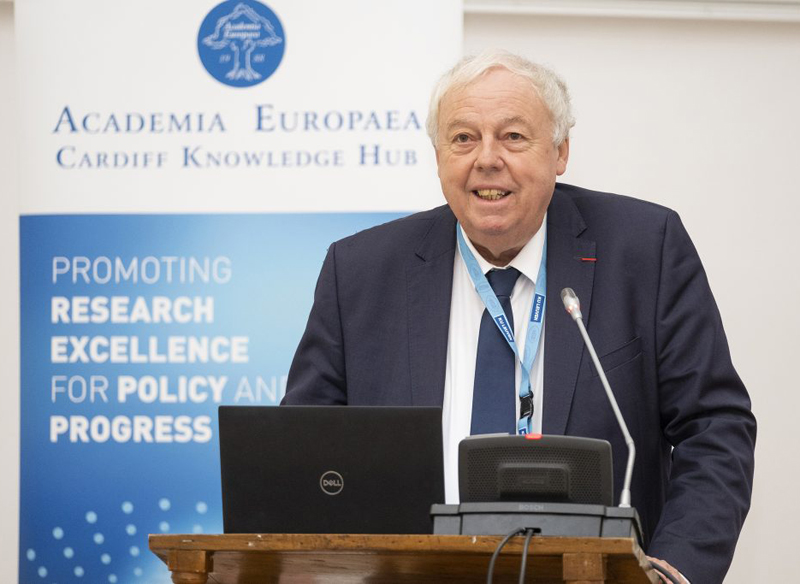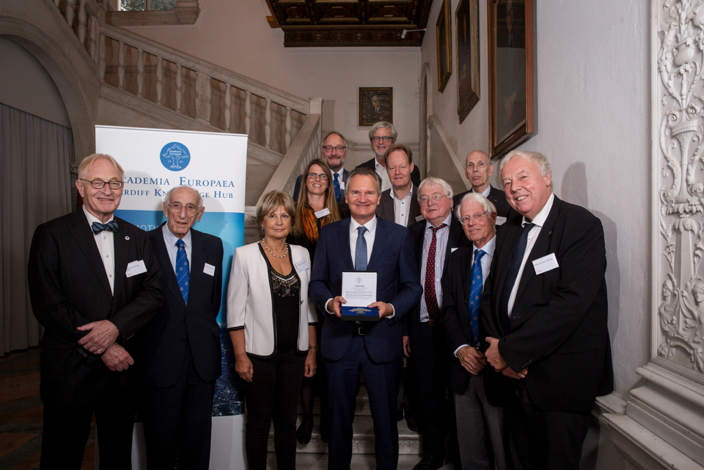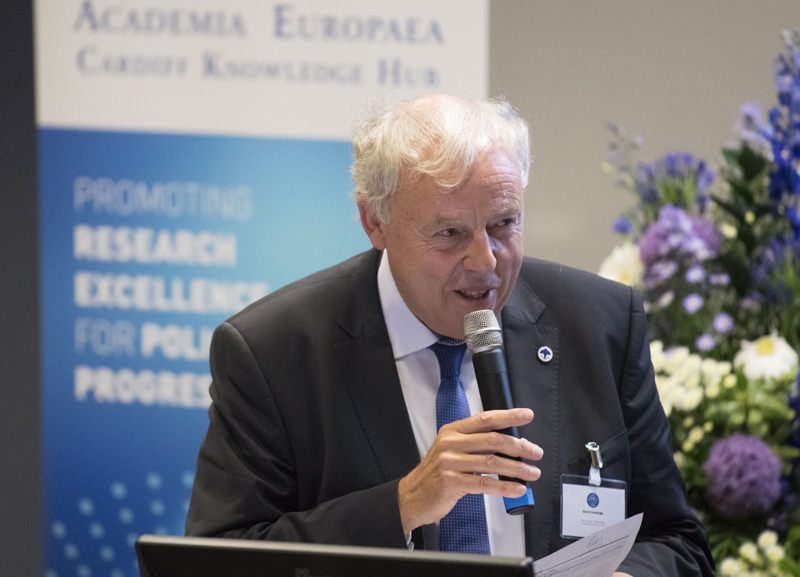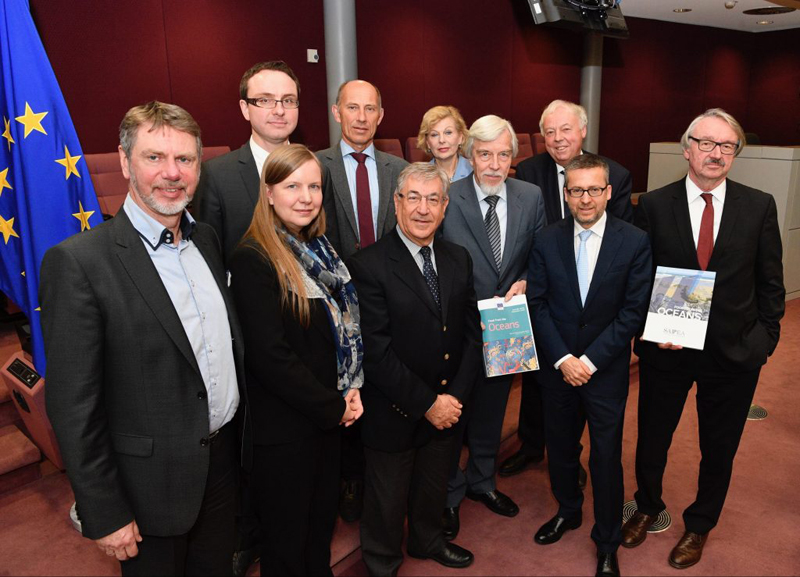My time as President of Academia Europaea: a special collective spirit#
Professor Sierd Cloetingh reflects on his time as President of Academia Europaea#
About Professor Sierd Cloetingh MAE#
Sierd Cloetingh is a Distinguished Professor at Utrecht University . He was elected President of Academia Europaea in July 2014.
. He was elected President of Academia Europaea in July 2014.
Professor Cloetingh was a member of the Scientific Council of the European Research Council from 2009-2015 and Vice-President from 2014-2015. He served as President of the Association for European Cooperation in Science and Technology (COST
from 2009-2015 and Vice-President from 2014-2015. He served as President of the Association for European Cooperation in Science and Technology (COST ) from 2017-2019.
) from 2017-2019.
Professor Cloetingh is a member of the Royal Netherlands Academy of Arts and Sciences and Foreign Member of the Royal Norwegian Academy of Sciences, the Royal Danish Academy of Sciences, the Heidelberg Academy, the Bavarian Academy and the German Academy for Technical Sciences, acatech. He is also an honorary member of the Hungarian Academy of Sciences.
The interview#
You became the President of Academia Europaea in 2014. What are your standout memories of the past seven years?
 , and organised by Ole Petersen – who is actually one of the founders of our Academy. As I mentioned on that occasion, the vision of the founders is even more timely today than it was in 1988. It was a bottom-up initiative and it is that spirit I like the most about Academia Europaea.
, and organised by Ole Petersen – who is actually one of the founders of our Academy. As I mentioned on that occasion, the vision of the founders is even more timely today than it was in 1988. It was a bottom-up initiative and it is that spirit I like the most about Academia Europaea.
I have been very fortunate to function as President with a fantastic collective spirit in the Academia Europaea Board, with dedicated support from David Coates and Teresa McGovern in our London office, and from all the people making a special effort in our hubs.
Apart from that, I have always greatly enjoyed the personal contact with our membership, people from different backgrounds and from so many different countries. I am also very happy with the foundation of the Young Academy of Europe
 , again a bottom-up initiative but this time from the young generation of scholars, and it is wonderful to have them affiliated with us.”
, again a bottom-up initiative but this time from the young generation of scholars, and it is wonderful to have them affiliated with us.”
You became a member of the Academia Europaea in 1993, not long after it was established in 1988. How did you first become aware of the Academy and how did you become involved? What did it mean to you to become a member?
It was also very special to meet Stephan Mueller
 and Enric Banda, role models for me as earth scientists, who had truly a European vision for our discipline and who both served as chairs of the Academia Europaea Earth and Marine Sciences section. I was therefore very honoured when Enric asked me some years later to take over the chair of that section. After the merge of Earth and Cosmic Sciences, I returned some years later as chair of this new section.
and Enric Banda, role models for me as earth scientists, who had truly a European vision for our discipline and who both served as chairs of the Academia Europaea Earth and Marine Sciences section. I was therefore very honoured when Enric asked me some years later to take over the chair of that section. After the merge of Earth and Cosmic Sciences, I returned some years later as chair of this new section.
For my field of research, Earth Sciences, Academia Europaea really has been serving, and still serves, as a platform for bringing people together. It has been the place where big research projects such as the TOPO-EUROPE
 , an initiative which evolved into a EUROCORES
, an initiative which evolved into a EUROCORES programme with funding for more than 60 young researchers from more than 20 countries, were born.
programme with funding for more than 60 young researchers from more than 20 countries, were born.
It was also the interaction with people from other fields that broadened my views, people that without Academia Europaea, I would never have met. That motivated me to serve at a later stage as a member and Vice-President of the European Research Council
 , and President of the European Association for Cooperation in Science and Technology
, and President of the European Association for Cooperation in Science and Technology .”
.”
During your time as Academia Europaea President, four more knowledge hubs have opened across Europe. What impact do you believe the hubs have?
Each of these hubs adds a very special dimension to our Academy, both in a regional sense and in a thematic sense. I am very impressed by the high level of activity and commitment by their academic directors and the hub staff. The impact of these hubs is significant, both for our membership – because it brings the Academy closer to its members – and for the visibility of our Academy.
To open these hubs, and to renew the contracts with the ones that were already existing, has been very inspirational for me.”
Academia Europaea has been very involved in policy-related work at a European level, through the SAPEA project. Why is this important to you? How do you see the future of science advice in Europe?
 to the European Commission has been a very important development. I am extremely happy that Academia Europaea has gained a lot of credibility as a partner, together with the other academic networks - ALLEA
to the European Commission has been a very important development. I am extremely happy that Academia Europaea has gained a lot of credibility as a partner, together with the other academic networks - ALLEA , FEAM
, FEAM , EURO-Case
, EURO-Case and EASAC
and EASAC , in the SAPEA
, in the SAPEA consortium formed to provide scientific advice for policy.
consortium formed to provide scientific advice for policy.
In this effort we work closely with the Group of Chief Scientific Advisors
 , chaired by former YAE
, chaired by former YAE President Nicole Grobert, member of our Academy. One of the six other Advisors is Professor Éva Kondorosi, a member of the Board of our Academy. Our members are very motivated to serve in the SAPEA
President Nicole Grobert, member of our Academy. One of the six other Advisors is Professor Éva Kondorosi, a member of the Board of our Academy. Our members are very motivated to serve in the SAPEA working groups and being involved in SAPEA adds another dimension to being a member of our Academy.
working groups and being involved in SAPEA adds another dimension to being a member of our Academy.
It fits perfectly with the Academia Europaea ambition to be a voice for science and I think the European Commission really demonstrated vision by establishing this mechanism. The academies were chosen to provide independent advice and I think that’s exactly the spirit that motivated the founders of our Academy. I’m very happy that we are working effectively together with the other academic networks in the SAPEA consortium.
The Cardiff Hub is making a crucial contribution to our work for SAPEA, where we have served as the lead academy for three of the Evidence Review Reports, out of the eight produced so far. Here Cardiff makes the difference, due to the fantastic work of Academic Director Ole Petersen, our Cardiff Hub Manager Louise Edwards
 , and the other members of the Cardiff Hub ‘dream team’. This is one example of the key role of our hubs and this is also realised by the other partners in SAPEA, by the staff of the European Commission and by the group of Chief Scientific Advisors.
, and the other members of the Cardiff Hub ‘dream team’. This is one example of the key role of our hubs and this is also realised by the other partners in SAPEA, by the staff of the European Commission and by the group of Chief Scientific Advisors.
We are now gearing up for the continuation of SAPEA, which is called SAPEA+. In this next phase of SAPEA, we will also be joined by a consortium of the Young Academies – national academies but also the Young Academy of Europe. It’s a continuous process, where we see the role of our Academy growing and growing.”





